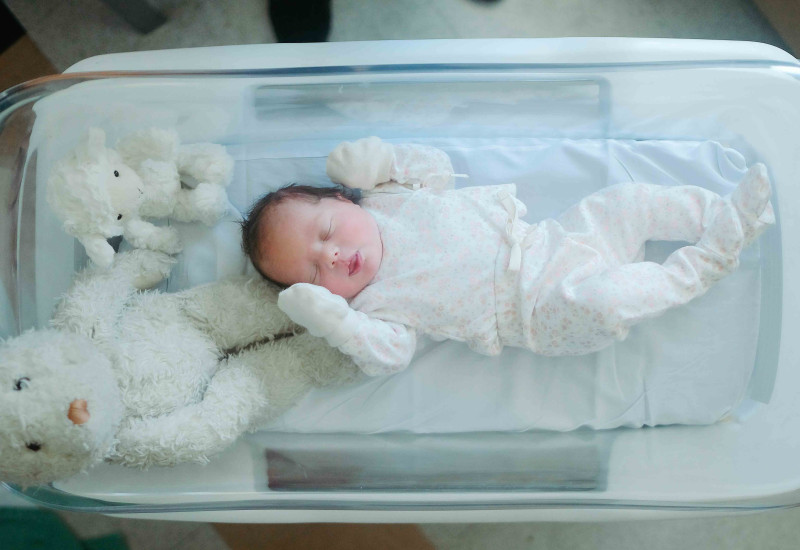Statutory neonatal care leave and pay: What you need to know

From 6th April 2025, parents of babies needing neonatal care will be entitled to up to 12 weeks of additional paid leave—on top of maternity, paternity, or adoption leave. Neonatal Care Leave (NCL) will become a day-one right for employees, meaning they will qualify from their first day at work.
What is neonatal care?
Recent statistics show that approximately 40,000 babies spend over one week in neonatal care each year, and the government has estimated that around 60,000 parents could benefit from such new rights across England and Wales.
The new law defines neonatal care as one of the following:
- Hospital care (including maternity wards and outpatient departments)
- Home care under a consultant’s supervision, with ongoing monitoring
- Palliative or end-of-life care
Medical care that starts after 28 days from birth or lasts fewer than 7 continuous days does not qualify for statutory leave or pay, and so the legislation envisions that this type of leave is available to the most immediate and serious cases.
Who Can Take Neonatal Care Leave?
You will be eligible to take neonatal leave if your baby is born on or after 6th April 2025 and has spent at least 7 continuous days in neonatal care.
You must be the parent, intended parent (via surrogacy), or the partner of the baby’s mother, with responsibility for raising the child.
You must take the leave to care for your baby.
Who Qualifies for Neonatal Care Pay (NCP)?
To receive paid leave, you must:
- Have 26 weeks’ continuous service by the 15th week before the due date.
- Earn at least £123 per week (current lower earnings limit for National Insurance).
Pay is at the statutory paternity pay rate or 90% of average earnings (whichever is lower).
How Long is Neonatal Care Leave & When Can You Take It?
For every 7 days your baby spends in neonatal care, you get one week of NCL, up to 12 weeks total.
- Leave must be taken within 68 weeks of birth.
- Most parents will use NCL after maternity, paternity, or adoption leave ends.
- Partners may take it earlier, especially if paternity leave has already ended.
The legislation has an added complexity, in that there are two types of neonatal leave. Initially, we imagine this may be unclear for employees and employers to identify which type of leave applies. The two types of NCL periods are:
Tier 1: This is leave taken while your baby is still in care (or within a week of discharge). It can be taken in separate blocks (minimum one week). A common scenario for tier 1 leave would be a father who has used their 2 weeks of paternity leave and, since their return to work, the child has begun receiving neonatal care. If the care continues for more than 7 days, they could take tier 1 NCL.
Tier 2: This is leave taken later. Must be taken in one continuous block but can be added onto other statutory paid leave such as maternity, paternity or shared parental leave.
How Can I Give Notice?
- Tier 1 leave: Notify your employer before the first absence that week (or as soon as possible).
- Tier 2 leave (single week): Give at least 15 days’ notice.
- Tier 2 leave (multiple weeks): Give at least 28 days’ notice.
The notice must include:
- Their name.
- The child's date of birth and, in adoption cases, the date of placement or the date the child entered Great Britain.
- The date or dates the child started to receive neonatal care.
- If the child is no longer receiving neonatal care, the date such care ended.
- The date on which the employee chooses the period of NCL to begin.
- The number of weeks of NCL the notice is being given for.
- That the employee is taking the leave to care for the child.
- If it is the first notice in respect of that child, confirmation that they meet the eligibility requirements above.
These notification requirements apply unless employers agree to waive notice requirements. If a parent is needing to take this type of leave, it is unlikely their immediate concern would be whether they have complied with the prescriptive notice. In practice, it is more likely that employers will be empathetic and opt for a more flexible approach, perhaps accepting a more informal notice and then gathering any additional details at a subsequent date.
Your Rights While on Neonatal Care Leave
- You retain your job (or a suitable alternative if your role isn’t available).
- You accrue holiday and maintain contractual benefits (except pay).
- You can’t be dismissed or treated unfairly for taking NCL.
- You receive enhanced redundancy protections if you take 6+ continuous weeks of leave.
Conclusion
Neonatal Care Leave and Pay provides vital support for parents facing a challenging time in the early stages of their baby’s life and allows them to have dedicated time to spend with their baby without eating into their maternity, paternity or shared parental leave. The legislation highlights how important it is for employees to have access to these different types of family leave.
With the potential for many employees to be affected by such new rights, it is important that employers begin to review their staff policies, update their HR procedures, and consider implementing training on family leave.
As a final point, it is important to note that the new law could still change, and we anticipate more guidance will be given by the government in the upcoming months.
As always, if you have any queries in relation to Neonatal Care Leave whether as an employee or an employer, get in touch with the Employment Team at Leathes Prior on 01603 610911 and we would be happy to assist.
Note: The content of this article is for general information only and does not constitute legal advice. Specific legal advice should be taken in any specific circumstance.


